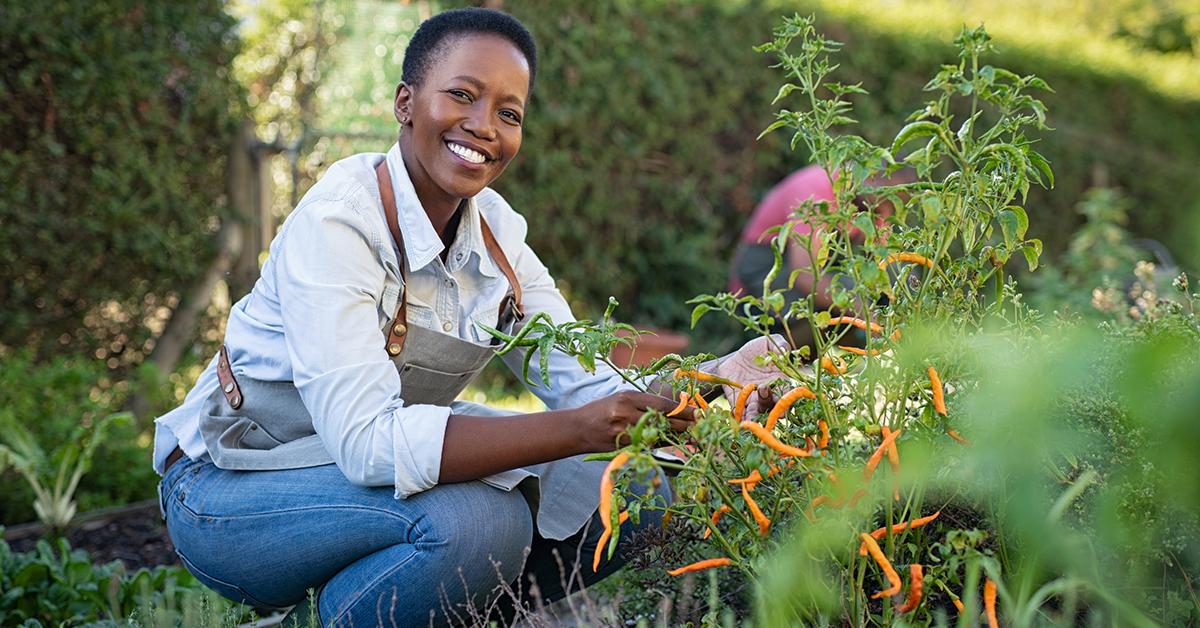Change Your Eco-friendly Space: A Comprehensive Overview to Gardening Tips for Beginners
The Ultimate Guide to Horticulture for Beginners: Detailed Tips and Methods for Growing a Growing Garden
Are you all set to study the globe of gardening? Look no even more than "The Ultimate Overview to Gardening for Beginners." This step-by-step overview will certainly walk you via whatever you need to recognize to grow a growing garden. From comprehending your garden room to selecting the right plants and preparing the dirt, we've got you covered. Get all set to release your environment-friendly thumb and create a lovely, prospering garden.
Understanding Your Yard Area
Understanding your yard space is important for developing a thriving garden. This will assist you establish which plants will certainly grow in each area. gardening kit for beginners.
Next, evaluate the soil in your yard. Is it sandy, clay-like, or loamy? Comprehending your soil kind will certainly guide you in picking the right plants and applying suitable dirt changes. Additionally, think about the drain of your yard. Is it prone to waterlogging or does it drain quickly? This info will certainly help you make notified choices concerning watering and plant placement.
These are small areas that may vary in temperature or wetness degrees compared to the remainder of your yard. Make use of these variants to your advantage by planting moisture-loving or heat-loving plants in these locations.
Selecting the Right Plants

Do you like low-maintenance plants or are you eager to place in additional initiative for high-yield plants? Believe concerning the amount of time, power, and resources you are prepared to invest in your garden.
Furthermore, think about the area offered in your yard. Take dimensions and plan out the design of your plants. Think about the fully grown dimension of each plant and see to it they have sufficient room to expand without overcrowding each other.
Ultimately, consider the functionality of your plant choices. gardening tools for beginners. Will you be able to supply the needed treatment and upkeep for your picked plants? Take into consideration factors such as watering, feeding, pest control, and pruning
Preparing the Soil for Growing
When you have chosen the right plants for your prospering garden, it's time to dive right into the crucial job of preparing the dirt for planting. Before you begin excavating, it's crucial to analyze the high quality of your soil. Take an example and test its pH levels, as different plants grow in different pH arrays. If necessary by including lime to raise it or sulfur to reduce it., change the pH.
When the dirt prepares, produce furrows or openings for planting. The depth and spacing will certainly depend upon the details requirements of your selected plants, so refer to the seed packages or plant labels for assistance. Gently position the plants in their designated areas, making certain that the origins are covered with dirt. Firmly press the dirt around the base of each plant to get rid of any type of air pockets.
As you water, be cautious not to wash away the soil or damages the delicate plants. With correct dirt prep work, your yard will certainly be well-equipped to sustain the growth and success of your plants.
Watering and Fertilizing Techniques
After preparing the soil for growing, it's vital to understand reliable watering and fertilizing techniques to make certain the wellness and development of your yard. It's vital to strike an equilibrium when it comes to watering. Overwatering can cause root rot and other illness, while underwatering can cause stunted development and wilting. The key is to give adequate water to maintain the soil constantly moist however not saturated. If your plants need watering is by sticking your finger about an inch right into look at here now the dirt, one way to gauge. It's time to water if it really feels completely dry. When watering, go for the base of the plants, as moistening the fallen leaves can urge diseases. As for fertilizing, it's critical to provide your plants the nutrients they require check my blog to thrive. Organic fertilizers, such as compost or well-rotted manure, are outstanding options as they offer a slow launch of nutrients. It's ideal to apply plant foods in very early spring or late fall, adhering to the directions on the bundle. Keep in mind to sprinkle your plants after feeding to help the nutrients reach the origins. By mastering these watering and feeding methods, you'll be well on your way to a thriving garden.
Keeping a Healthy And Balanced Yard
To preserve a healthy and balanced yard, you must regularly evaluate your plants for indications of pests or diseases. By doing this, you can capture any kind of concerns at an early stage and take the essential steps to stop them from spreading out and triggering damage to your entire garden. Search for any uncommon places on fallen leaves, yellowing or wilting vegetation, or holes in the leaves, as these could be indications of insects or conditions. It is vital to take immediate activity. if you discover any of these signs.
One method to combat bugs is by utilizing all-natural internet remedies such as insecticidal soaps or neem oil. These are efficient in managing common insects like aphids, termites, and whiteflies without harming beneficial insects. Another technique is to motivate helpful pests like ladybugs and lacewings, which prey on yard pests. Growing flowers such as daisies, marigolds, and sunflowers will bring in these valuable bugs to your garden.
In addition to pests, diseases can also influence your plants. Correct spacing between plants and excellent air flow can also assist avoid the spread of diseases.
Conclusion
By understanding your garden area, selecting the right plants, preparing the soil, and applying proper watering and fertilizing techniques, you can create a successful yard. With patience and dedication, you'll quickly be appreciating the charm and bounty of your very own growing garden.
Use these variants to your benefit by growing moisture-loving or heat-loving plants in these areas.
